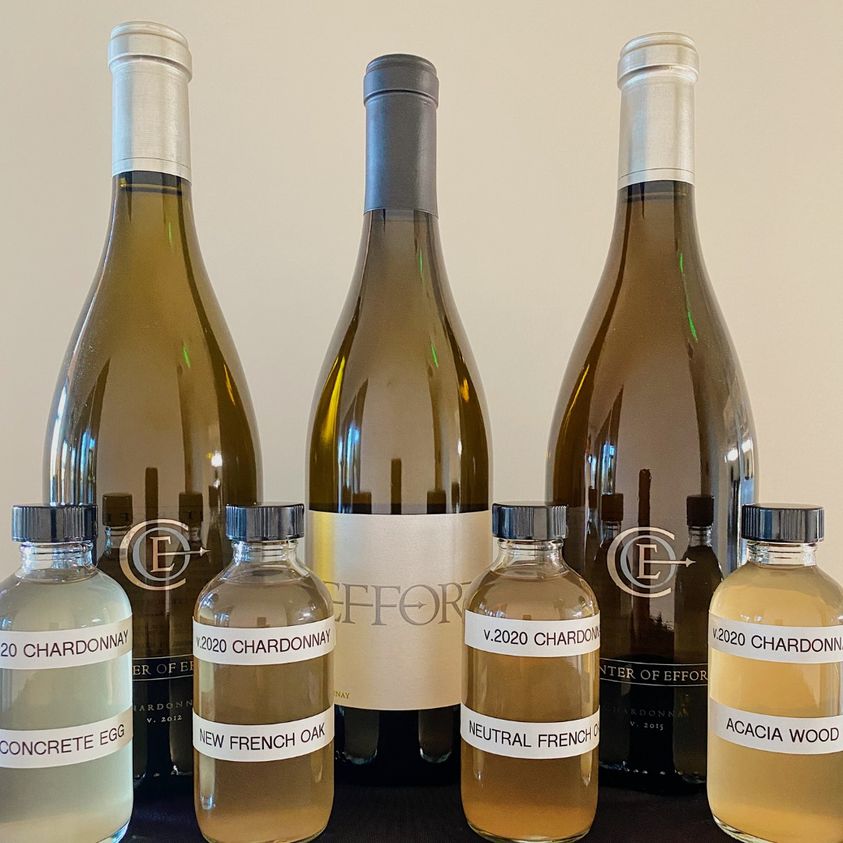
Wine drinkers have had a love/hate relationship with Chardonnay wine. There is always the controversy of whether it should be fermented in oak or in stainless steel. What I’ve learned through time and through a webinar I recently attended is that there’s a whole lot more to the picture of what makes a delicious Chardonnay. Winemaker and General Manager, Nathan Carlson, Associate Winemaker, Kevin Bargetto, and Director of Hospitality, Kasey Helt, from Center of Effort Winery and Vineyard (COE) shared just how they make a great Chardonnay.
My first question was, “Where did Center of Effort get its name?” The answer is that it is an old sailing term referring to the point on the sail where the forces come together. For Center of Effort this means how the wines come together through skillful cultivation, artistic winemaking, and a desire for excellence.
What Goes Into a Good Wine
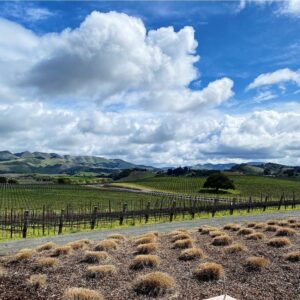
Of course, the terroir of where the grapes grow (the place’s characteristics of geography, soil, weather conditions, and climate) play a huge part in the final bottle of wine. Weather conditions can vary from year to year making it difficult to predict exactly how the grapes will mature. Center of Effort is located in the Edna Valley of California, the coolest climate AVA growing wine region in California that also has an extremely long growing season. Chardonnay is the most planted grape in the Edna Valley appellation.
There is also the vineyard management that plays into the picture. Years ago, I listened to one of the best vineyard managers in this area, and I failed to understand half of what goes into proper management. Knowing the exact time to harvest the grapes and when to process them also plays a huge part in the bottle you drink. Center of Effort is a sustainable farm, something they have worked hard to accomplish.
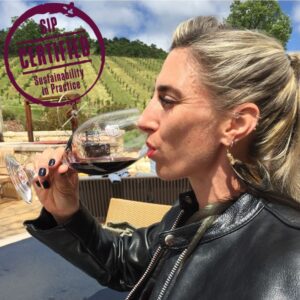
How the grapes are pressed determines the final taste, too. There are multiple press fractions that affect the flavor of the wine. Center of Effort uses a very gentle light press at first. This is the first 1 ½ hours where they get the highest quality. The next press is a hard press, providing a more bitter flavor. They separate this hard press out and don’t use it in their Chardonnays.
And then there are the winemakers who decide the exact way to arrive at the perfect balance of what goes in that bottle. If you have ever tasted a bottle made by a friend who isn’t in the business, you know how wrong that part of the process can go. The yeast used to ferment the grapes is also of great importance. Center of Effort uses the natural yeast found on their property to ferment the grapes while other winemakers purchase yeast from many sources, even from France. Using natural yeast allows the terroir to shine in the flavor.
Between the time of harvesting the grapes and the winemakers finding the perfect blend of grapes (which may include grapes from different lots), there is the fermentation process which is done in different types of barrels. Chardonnay is at first hard and steely but softens after about six months. The Chardonnay grape is a winemaker’s way to show their style of wine. However, Center of Effort winemaker, Nathan Carlson, told us they are more focused on telling the story of their land and not focusing on bringing a style to the wine.
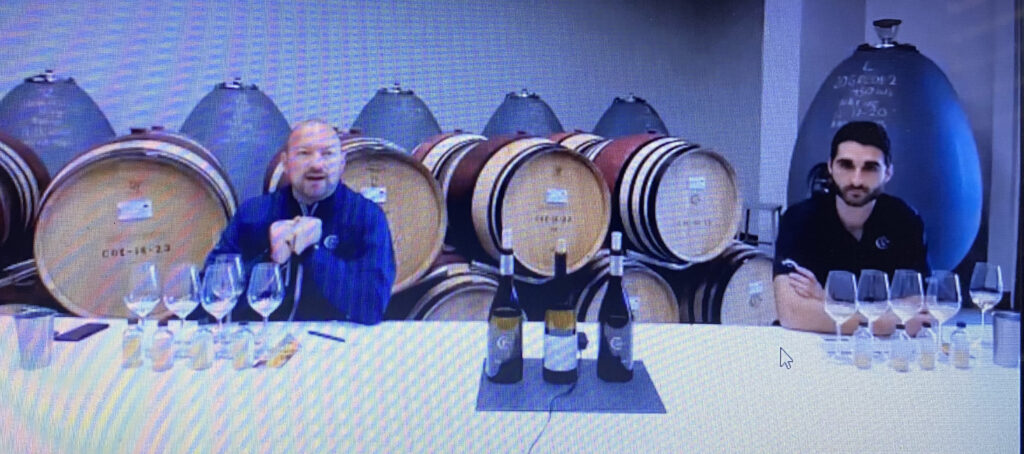
Barrels for Aging the Grapes
This webinar taught me a whole lot about how those barrels can change the taste of a wine. Chardonnay is a prime example of how influential those barrels can be. Chardonnay, in particular, is more about the structure and how the wine develops with time than some grape varieties.
We were sent samples of the same grape juice fermenting in four different types of barrels (known as cooperage) so that we could taste the difference each barrel provides to the overall flavor of the wine. Center of Effort blends the fermented product from all four types of barrels they use to come up with a beautiful and well balanced Chardonnay. Blending wine from these four types of barrels brings a complexity and layers to the Chardonnay.
Actually, the first type of barrel used isn’t actually a barrel at all. (See the above photo of the egg on the right.) They use a concrete egg vessel. The current interest in the egg dates from 2011. Rumor has it that a biodynamics farmer designed the shape of this concrete egg. However, dating back as far as 8,000 years ago in Georgia (the country), the concrete fermentation container was first used. It fell out of favor when stainless steel was introduced. One of the benefits of this concrete egg is that it allows for oxidation to occur which stainless steel does not. These eggs allow for the pure expression of the fruit, and it is the most neutral of all the barrels. You see the clean, bright classic stone fruit flavor with more acid in it. By the way, acidity is the biggest variable on how long a wine can age. The higher the acid, the longer they can age.
An unusual wood for one of the barrels used by Center of Effort is acacia wood. (That is the reddish barrels to the right side.) The Ark of the Covenant was built from this wood. This wood imparts sweet tones to the wine with a maple flavored note as well as white floral and honeycomb. While they don’t use much from the acacia barrels for there final bottles, this wood brings a freshness and a lift from the white floral and a bit of a grace note to the wine. Acacia wood brings a lot of umami to it with even some parmesan rind complexity.
Neutral French Oak barrels provide a bit of vanilla and coconut flavors from these barrels. Oak allows a controlled amount of oxygen into the wine to help develop it. To become a neutral oak barrel, it needs to have been used for four years to be classified as neutral.
New French Oak is the fourth type of cooperage used. Of course, all winemakers have their favorite cooper (wine barrel maker) to impart the influence a barrel of new French Oak brings to their grapes. Center of Effort likes a delicate presence with a lighter toasting regimen. New French Oak offers more vanilla character to the wine. They like barrels that are set aside in barrel yards outside for 1-3 years where the weather leaches more of the bitterness out of the wood and leaves a more subtle tone. When you smell wine from these barrels, you get sweet oak tones that lift the fruit character as well as show some spice tones of cinnamon and allspice along with the citrus of the fruit.
The Chardonnay Wines in the Bottles
My friend, Susan Montgomery and her husband, Todd, and I shared three bottles of Chardonnay from Center of Effort.
The 2017 Chardonnay ($24) was the youngest. Aged for 11 months in neutral French oak, concrete egg,
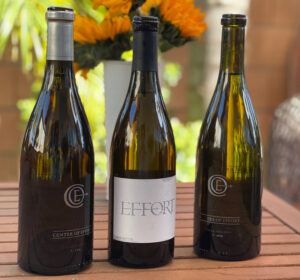
and acacia barrels, this wine is fruit driven with notes of lemon zest, Asian pear, and a flintiness to it. It’s a good one to serve with sushi.
The 2015 Chardonnay ($35) shows maturity with a full and opulent style and a lot of acidity (giving it structure, interest, and longevity.) You can detect white floral (gardenia and tuberose.) There are notes of cardamom and nutmeg with a baked apple and orange peel taste on the tongue. Our winemakers consider this 2017 a complete expression of their estate.
We also had the opportunity to open a bottle of the 2012 Chardonnay ($45) which was nearing the end of its life. We tasted a nuttiness of marcona almonds as well as quince paste and custardy tones. You could even find a truffle/mushroom tone. As it opened up, it became fruitier. The suggested pairing was quail, roasted chicken, or a lovely omelet with chanterelle mushrooms.
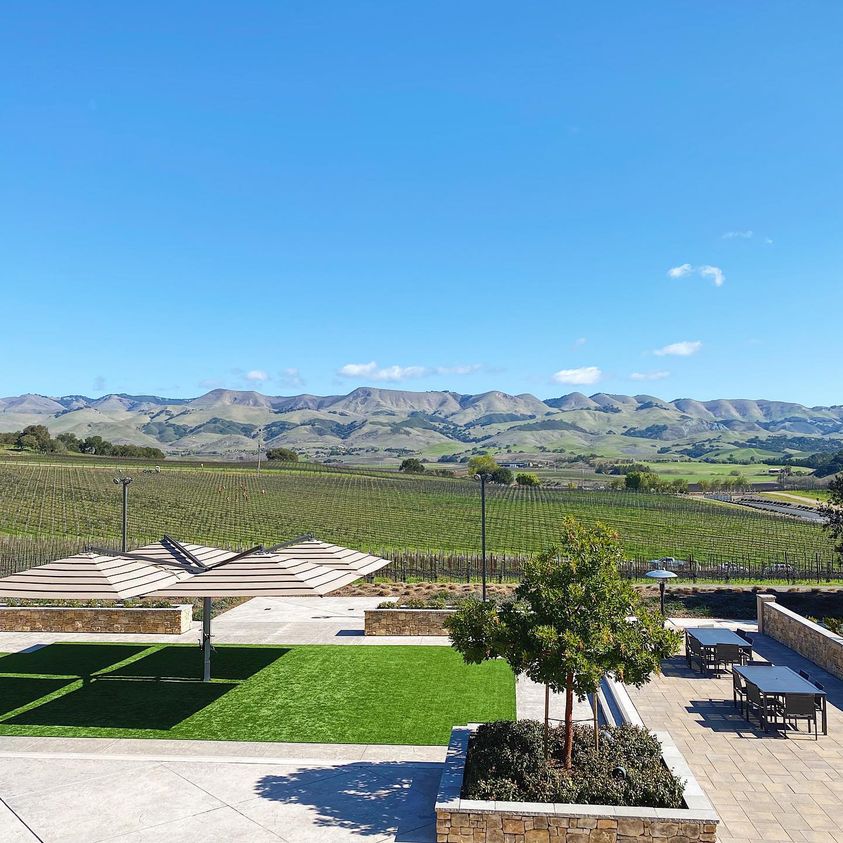
If you are able to visit Center of Effort, be sure to make an appointment. You will see the amazing setting looking at the Santa Lucia Mountain range. It even has an outdoor kitchen and putting green.
A big thank you to Center of Effort for providing all of this valuable information and the opportunity to drink their Chardonnays as well as the barrel tasting. I can highly recommend these Chardonnays.
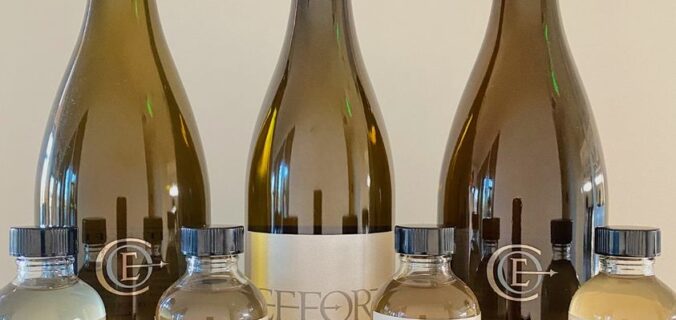
This article was very interesting.
Thank you, Marsha. I found our webinar one of the best to help us understand so much about the production of a great Chardonnay. I really appreciated getting the barrel samples as well as the different years of their Chardonnay for comparison.